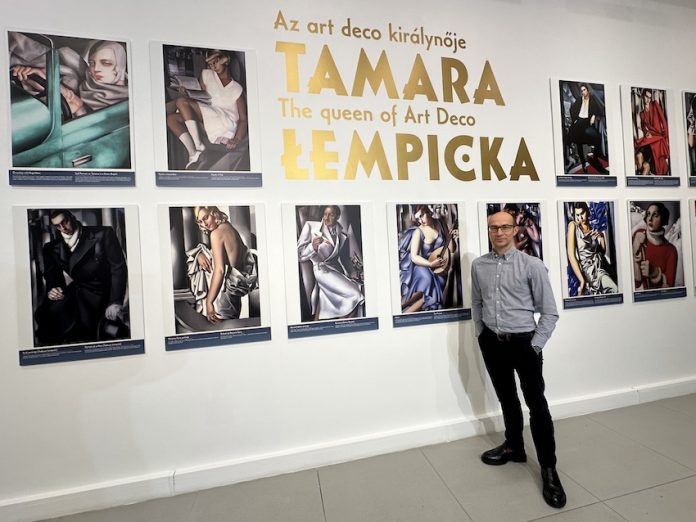“There are no miracles. There is only what you make.”
Edited by Anna Popper
With great interest and a full house, the exhibition Tamara Łempicka: The Queen of Art Deco was inaugurated at the Polish Institute in Budapest. The event was widely shared on social media and garnered a record number of likes and shares, underscoring Łempicka’s immense popularity among Hungarian audiences.
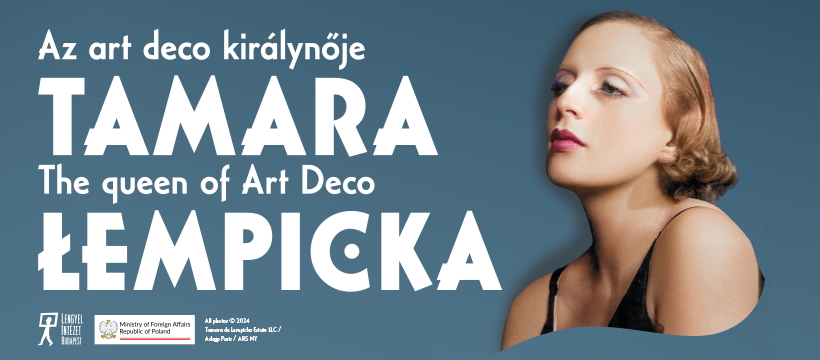
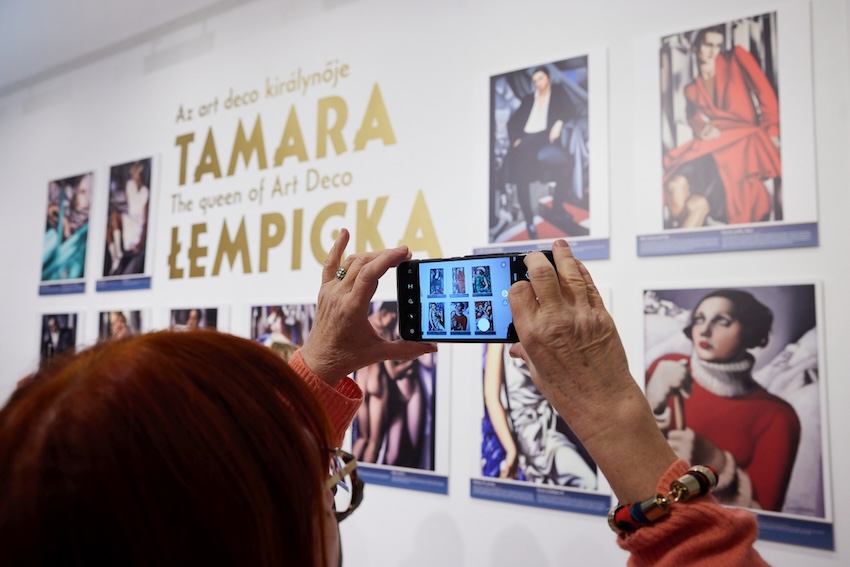
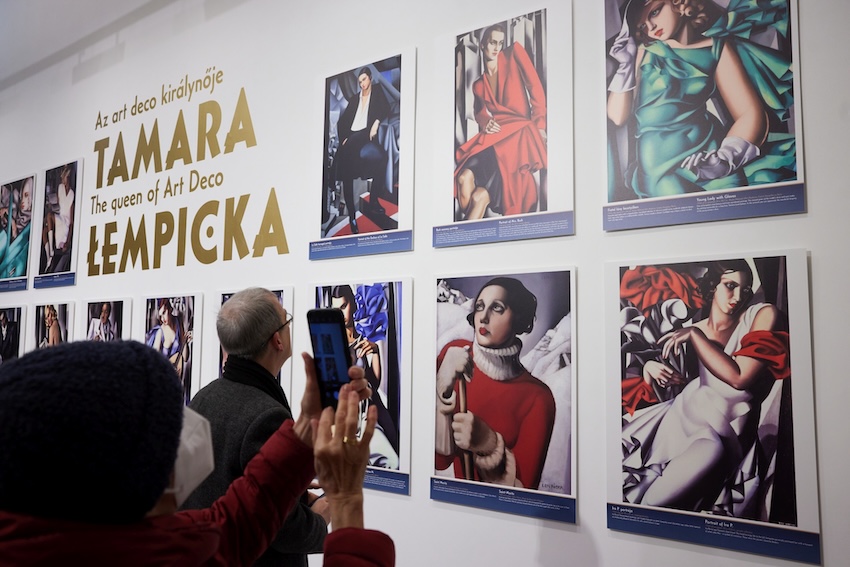
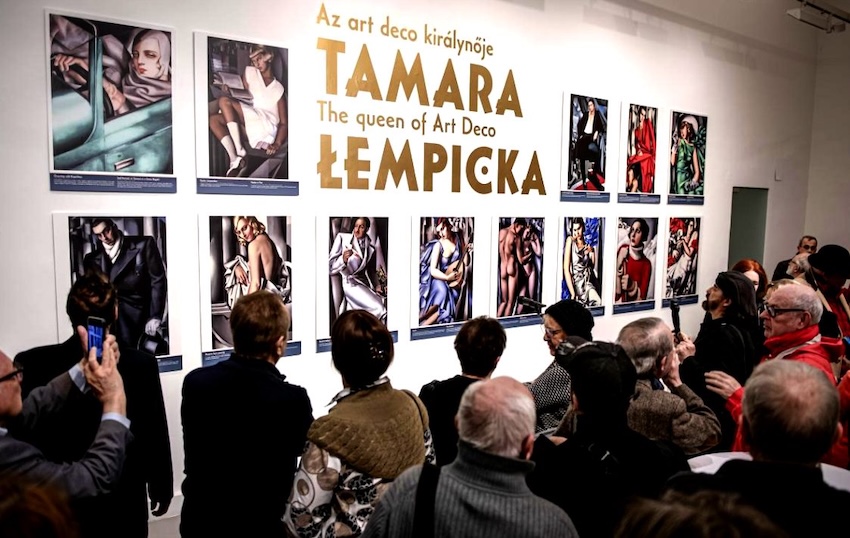
The exhibition, which opened on 21 January 2025, showcases significant milestones from the world-famous painter’s life alongside selected reproductions of her works. Her expressive, vividly coloured paintings, often accentuated with sculptural drapery and luxurious fabrics, bear her distinctive artistic signature and continue to captivate viewers. This visual impact is heightened by the fascinating and often tragic twists of her adventurous life, as pointed out by art critic and aesthetician Andrea Bordács, Head of the Visual Arts Department at ELTE SEK University. Bordács remarked that Łempicka “shaped her career with the survival strategies of a Central European”.
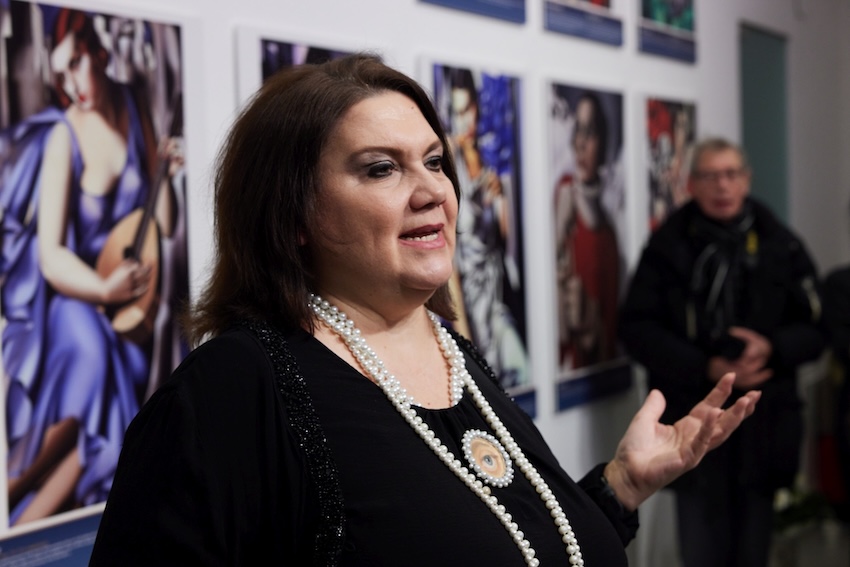

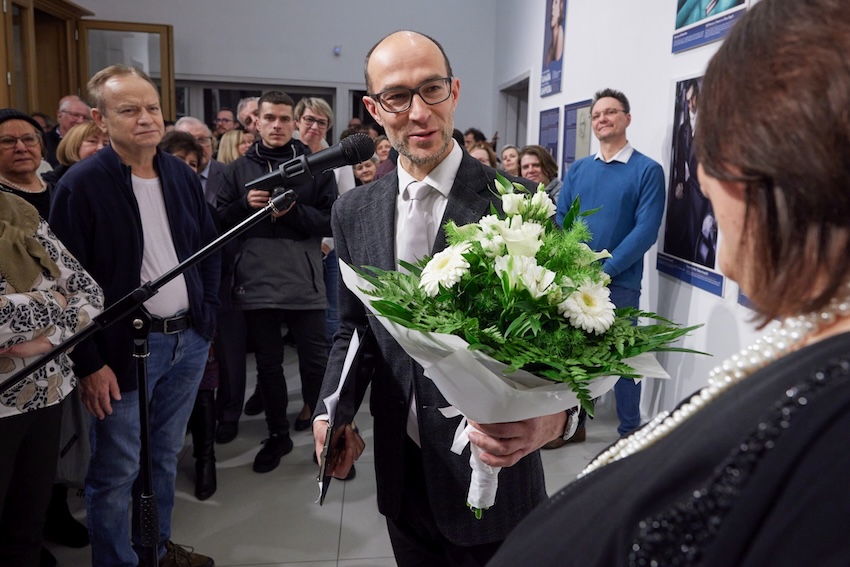
Born in Warsaw and raised in an elite family that valued intellectual rigor and cultural refinement, Tamara Gurwik-Górska (1898–1980) fled to Paris to escape the Russian Revolution. Thanks to her talent, determination and exceptional business sense, she quickly became a key figure in both the Parisian elite and the avant-garde art world. As the first internationally successful female artist, Łempicka was a self-driven, instinctive creator who meticulously built her career and professional reputation. Her extraordinary business acumen and deliberate artistic choices made her works highly sought after, with Hollywood celebrities paying millions of dollars for her paintings. For instance, Portrait of Marjorie Ferry (1932) sold for over $21 million in London in 2020, securing Łempicka’s place among the world’s most expensive female artists.
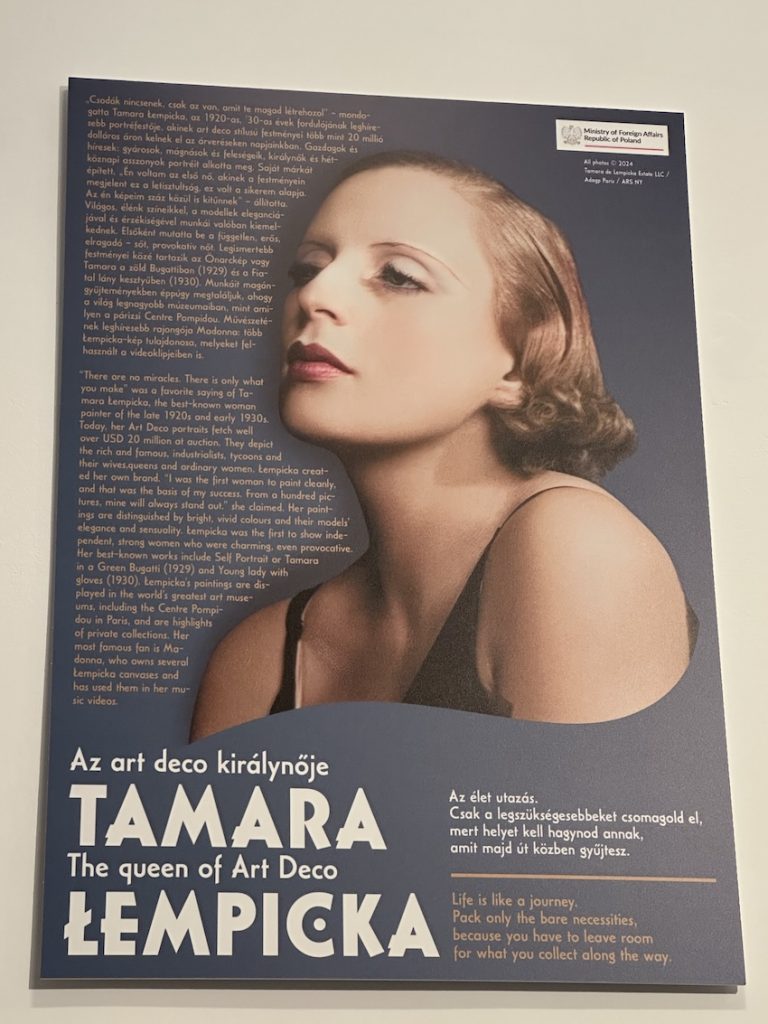
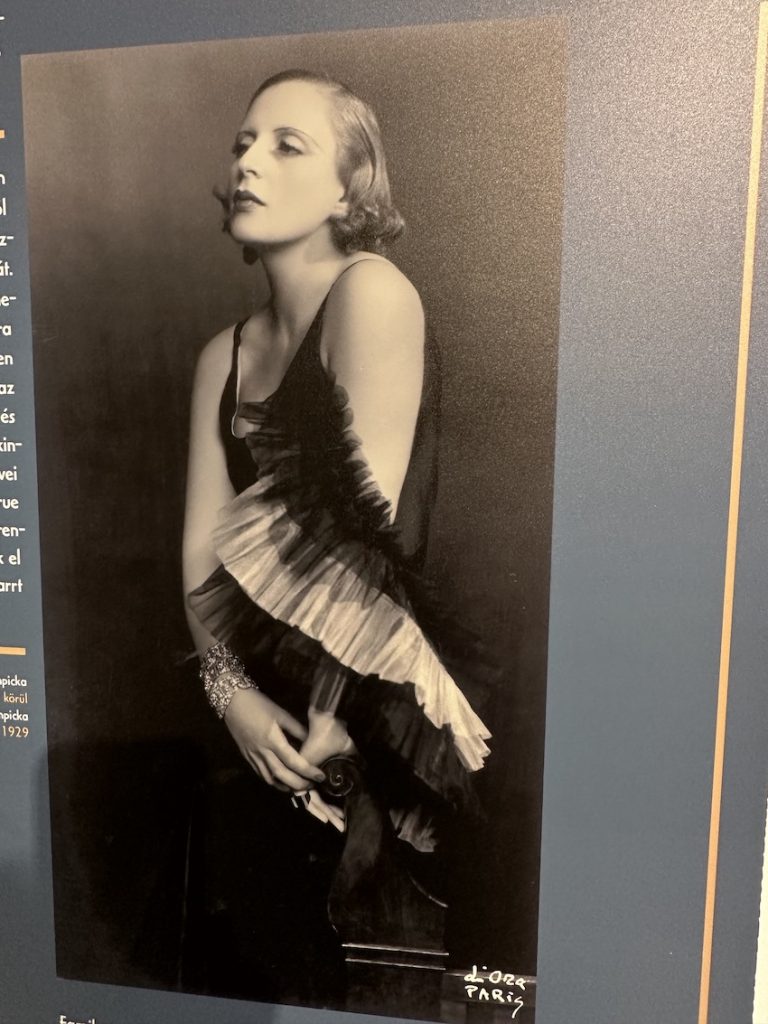
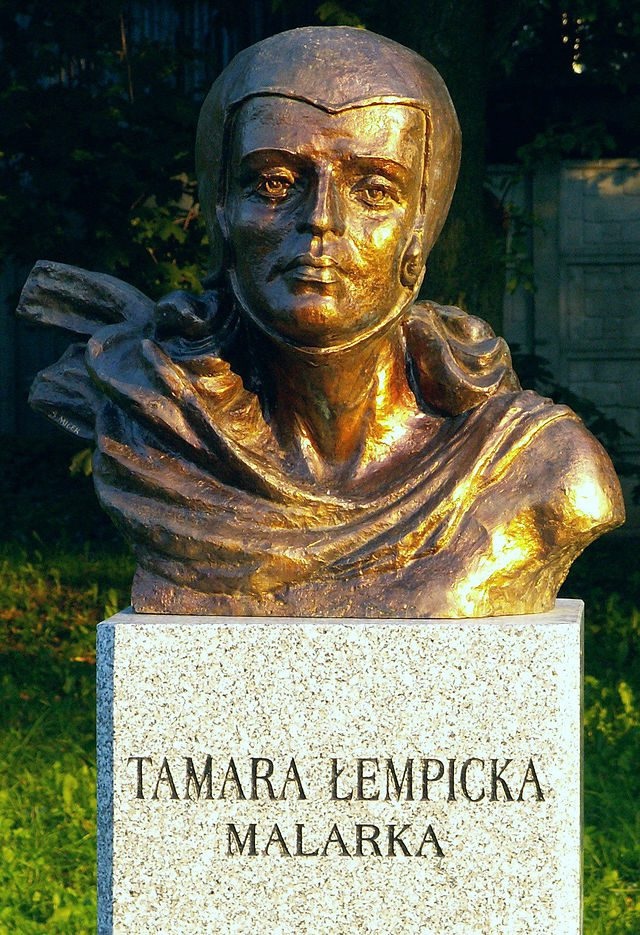
With her bold use of colour, strikingly elegant portraits, and unique interpretations of the human form, Łempicka gained immense popularity in the United States. However, in her native Poland, to which she remained emotionally attached throughout her life, she was overlooked for many years and only rediscovered relatively recently. In the past few years, major retrospectives at the National Museums of Lublin and Kraków in Poland – drawing record audiences of over 200,000 visitors – have reignited interest in her work.
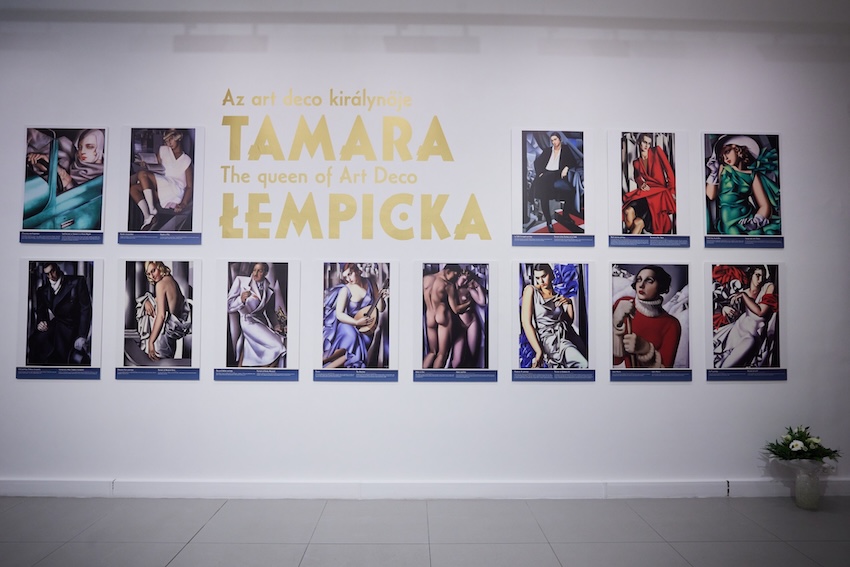
She was one of the first artists to depict independent, strong and captivating – sometimes even provocative – women. Today, her works command millions of dollars and can be found in prestigious private collections as well as in major museums worldwide, such as the Centre Pompidou in Paris. Among her most famous admirers is Madonna, who owns several of Łempicka’s paintings and has featured them in her music videos. Other high-profile collectors include Jack Nicholson and Barbra Streisand. Tamara de Łempicka was indeed very prolific throughout her career. She created a significant number of works, characterized by her distinctive style, which are kept in museums and private collections. Most of her paintings, 244 in total, are in the United States, while 164 of her works are held in France. Only 16 of her pieces can be found in Switzerland. Unfortunately, only four of her works are known in Poland.
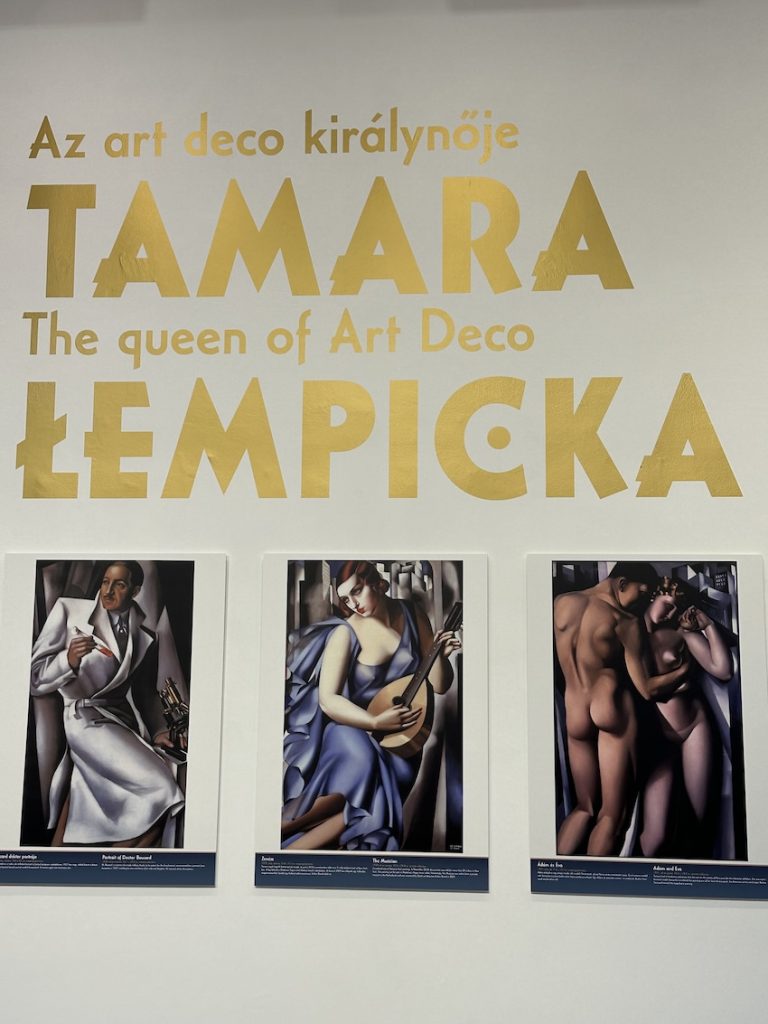
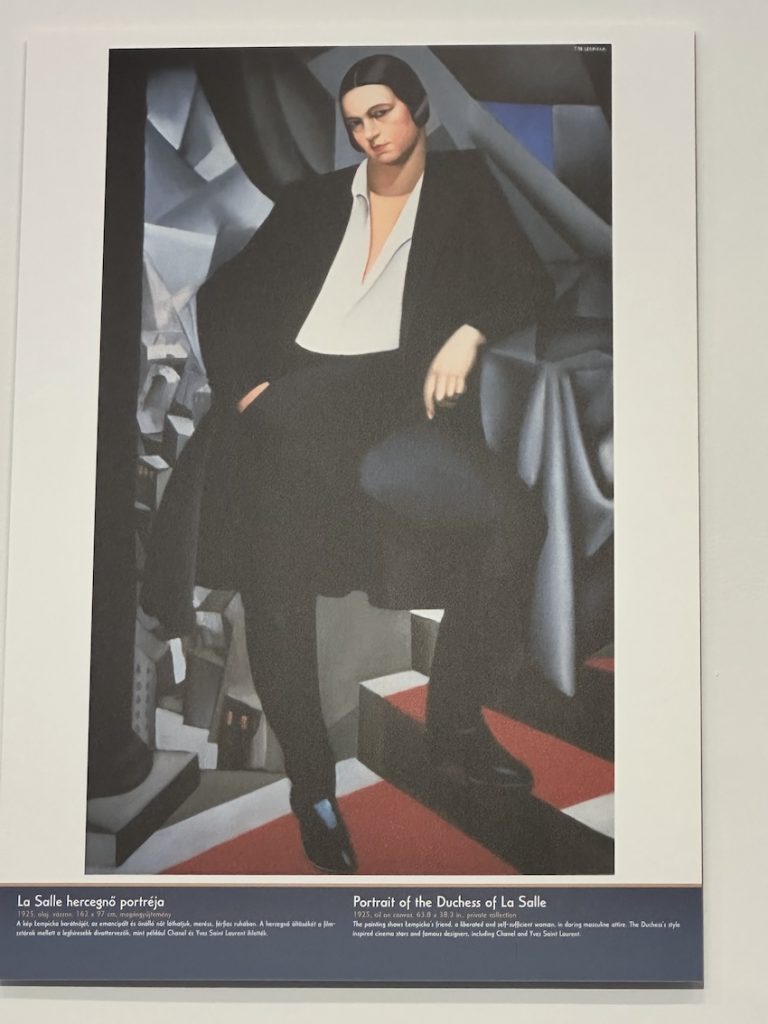
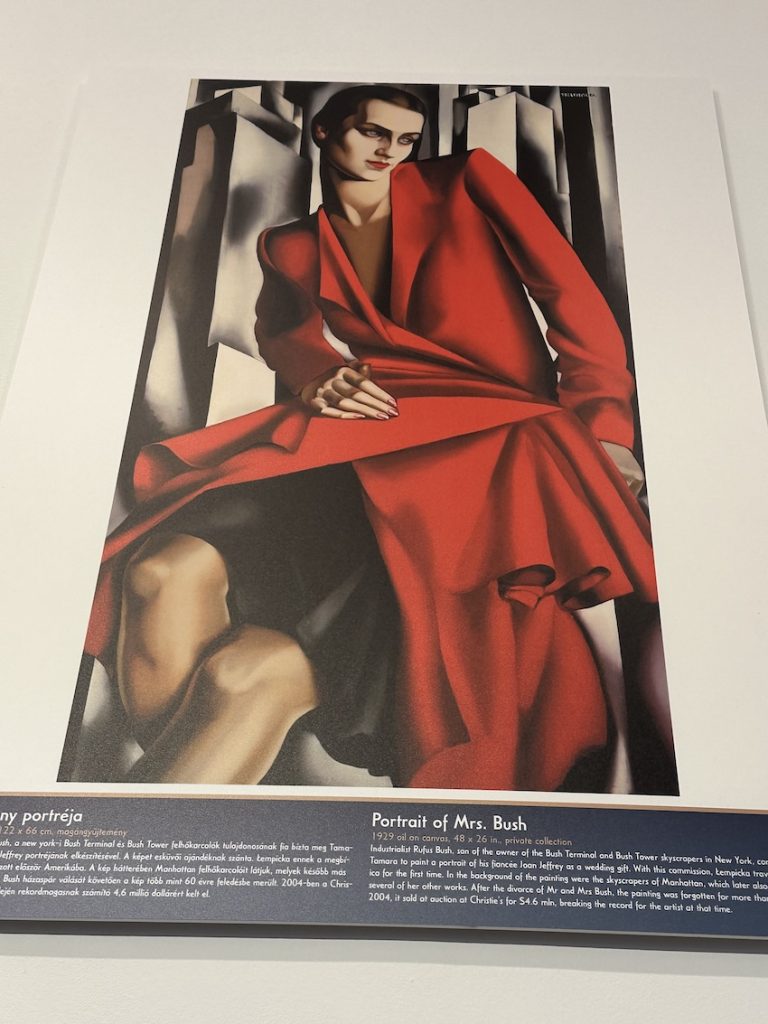
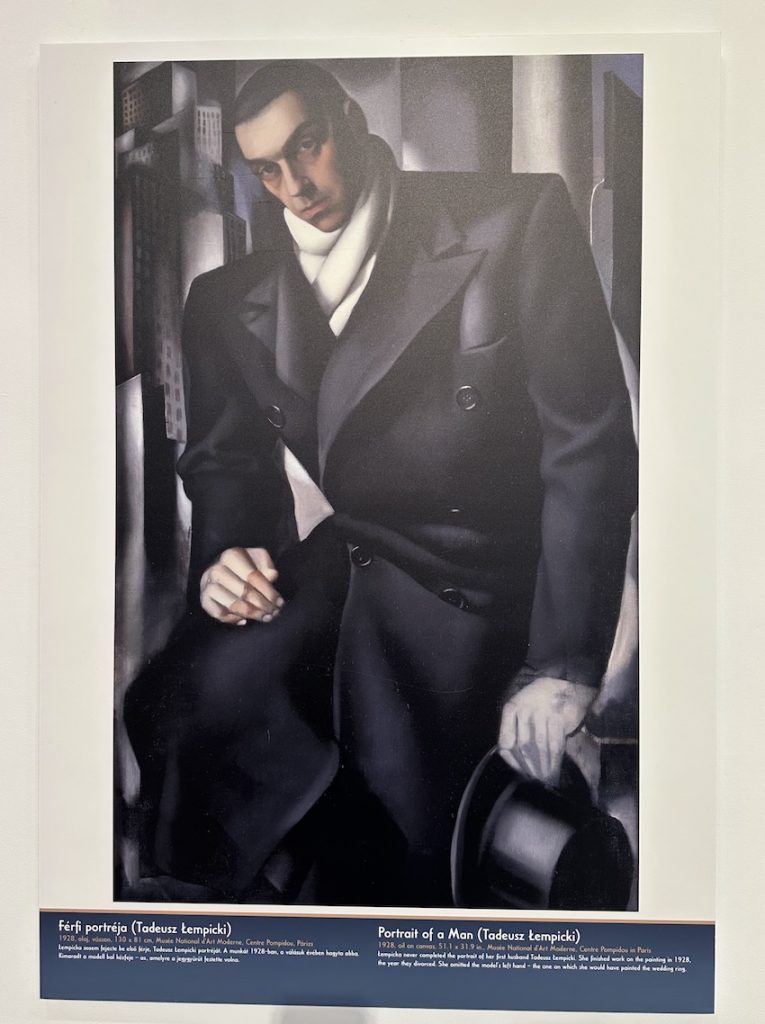
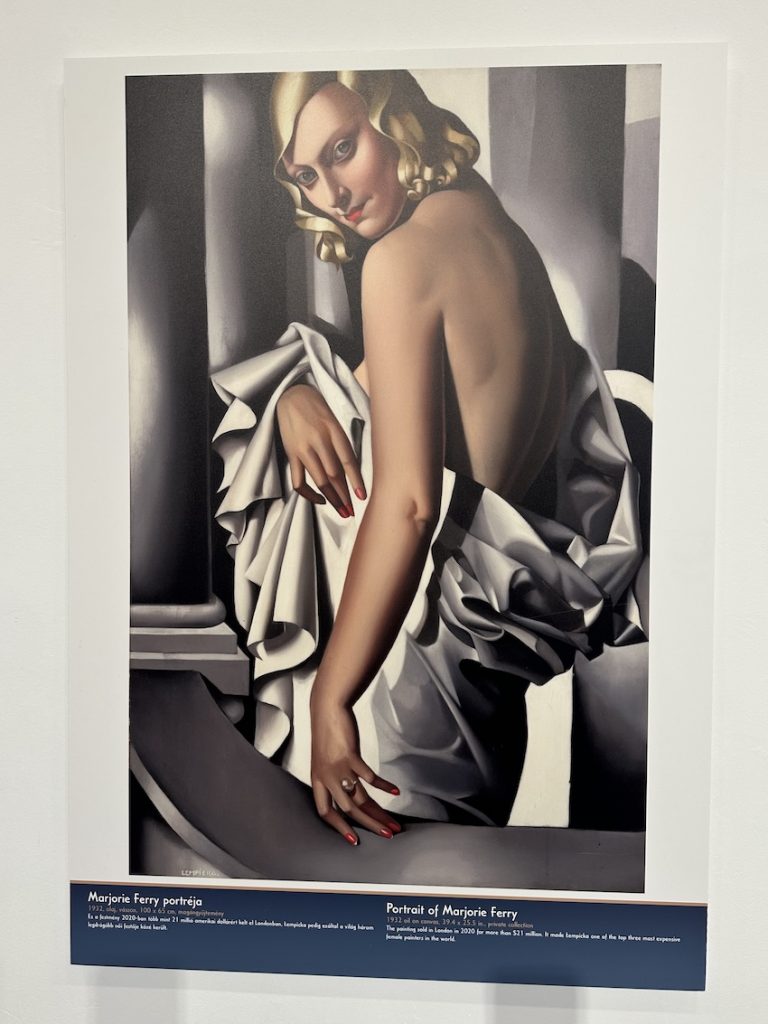
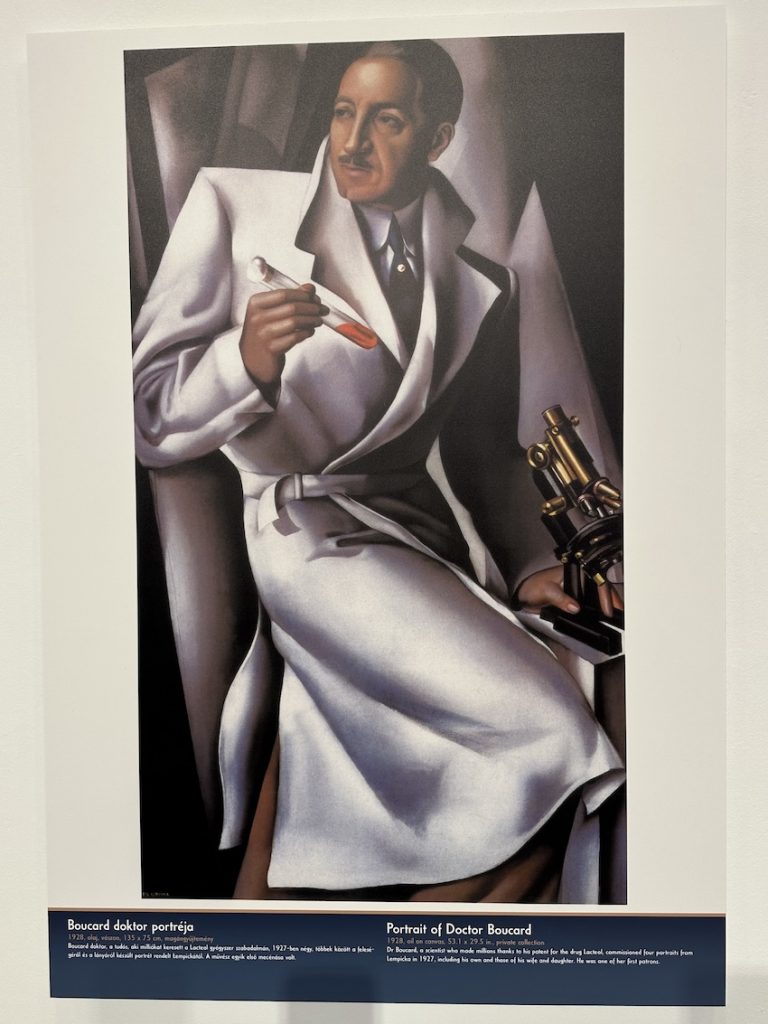
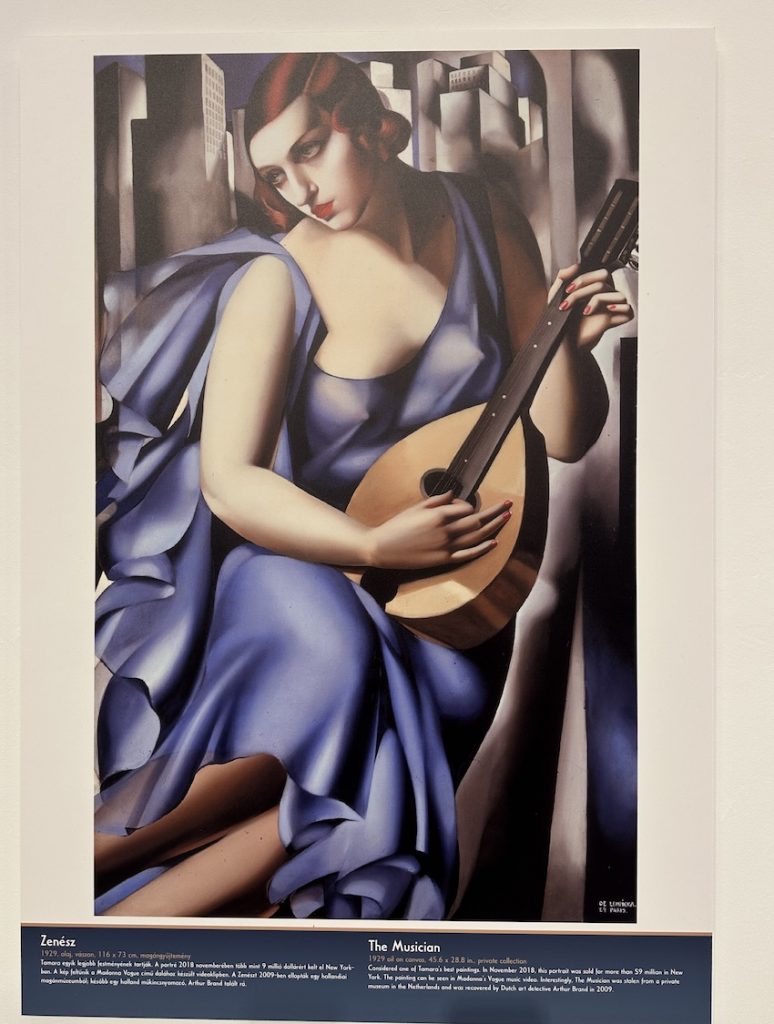
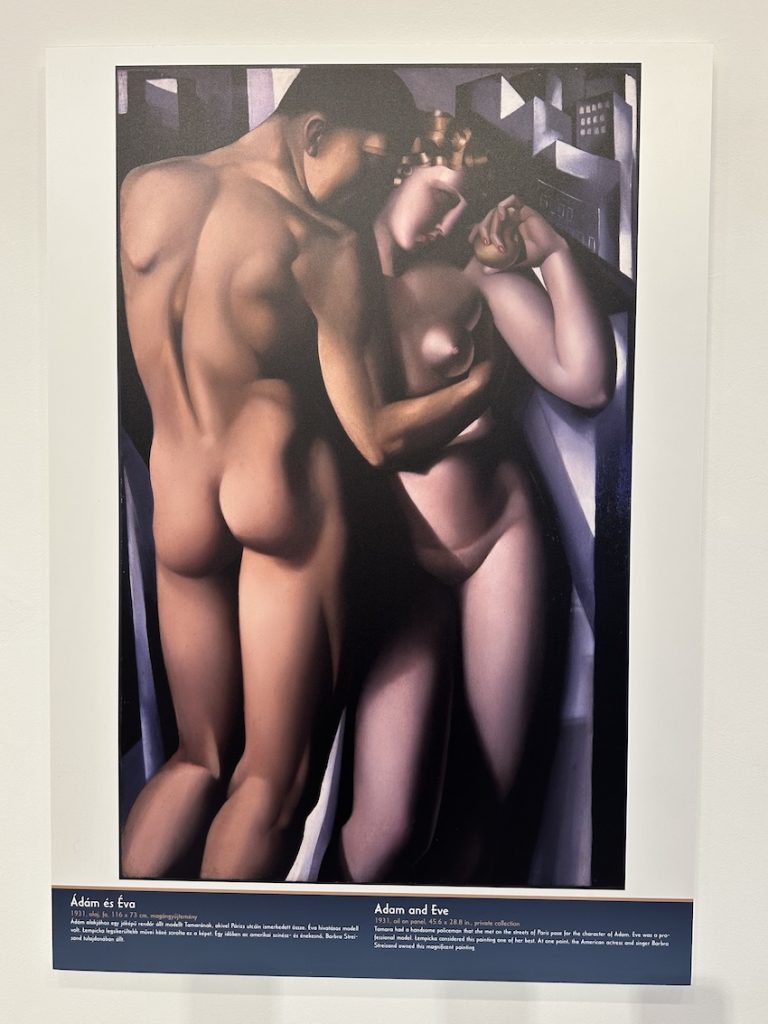
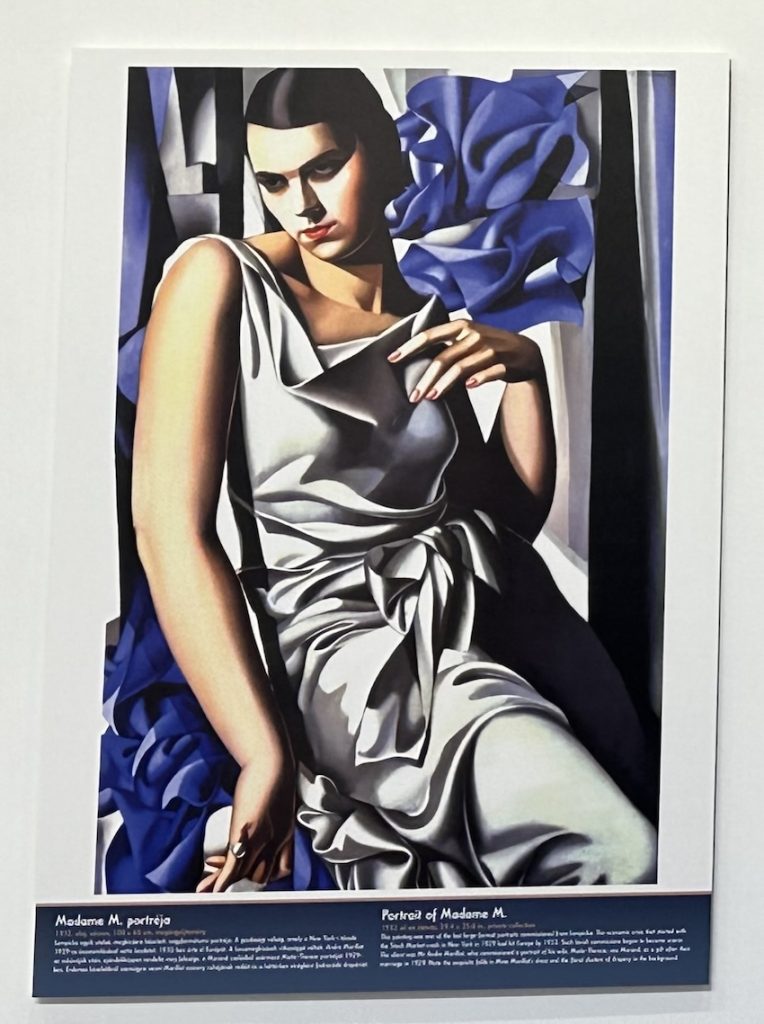
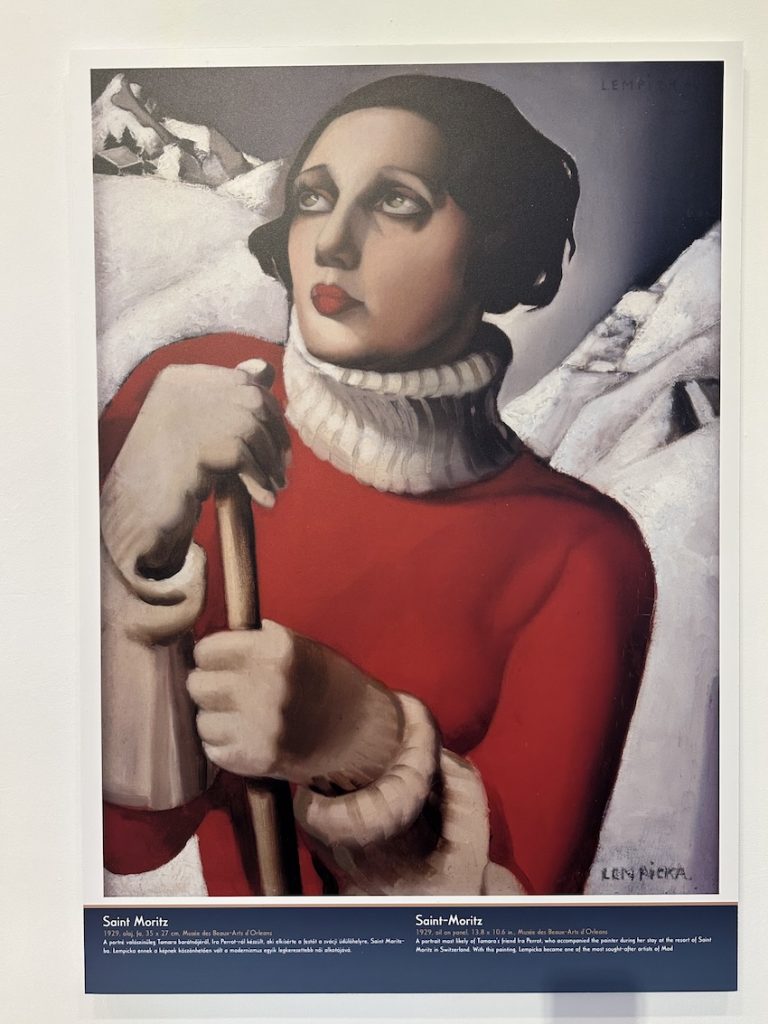
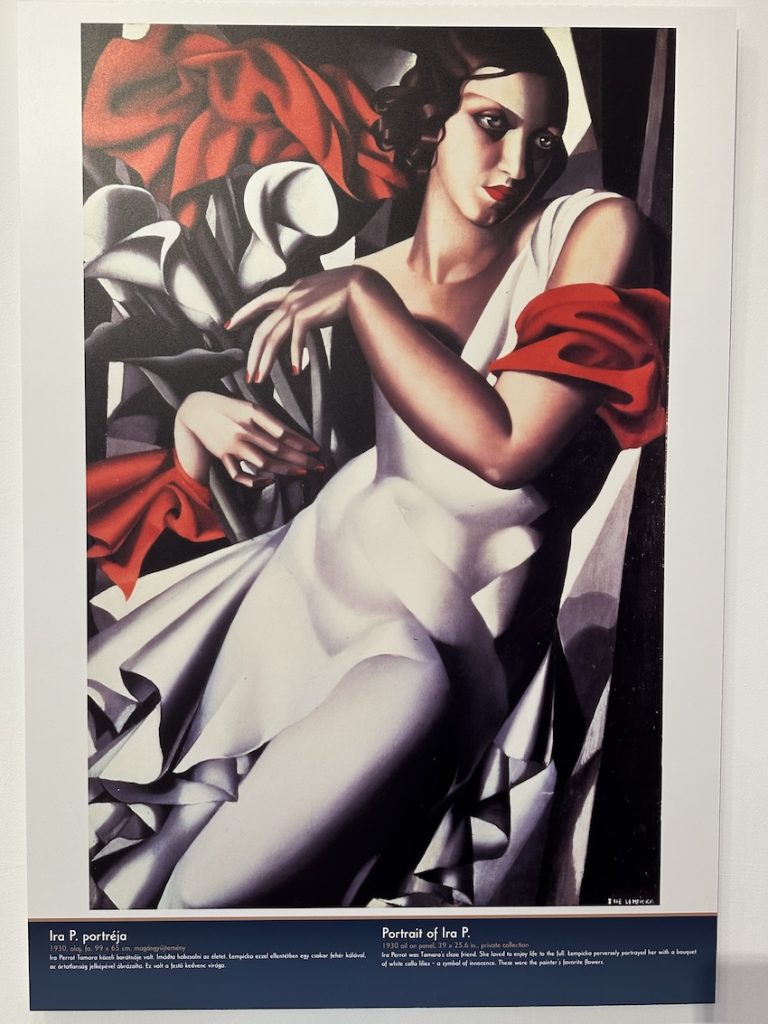
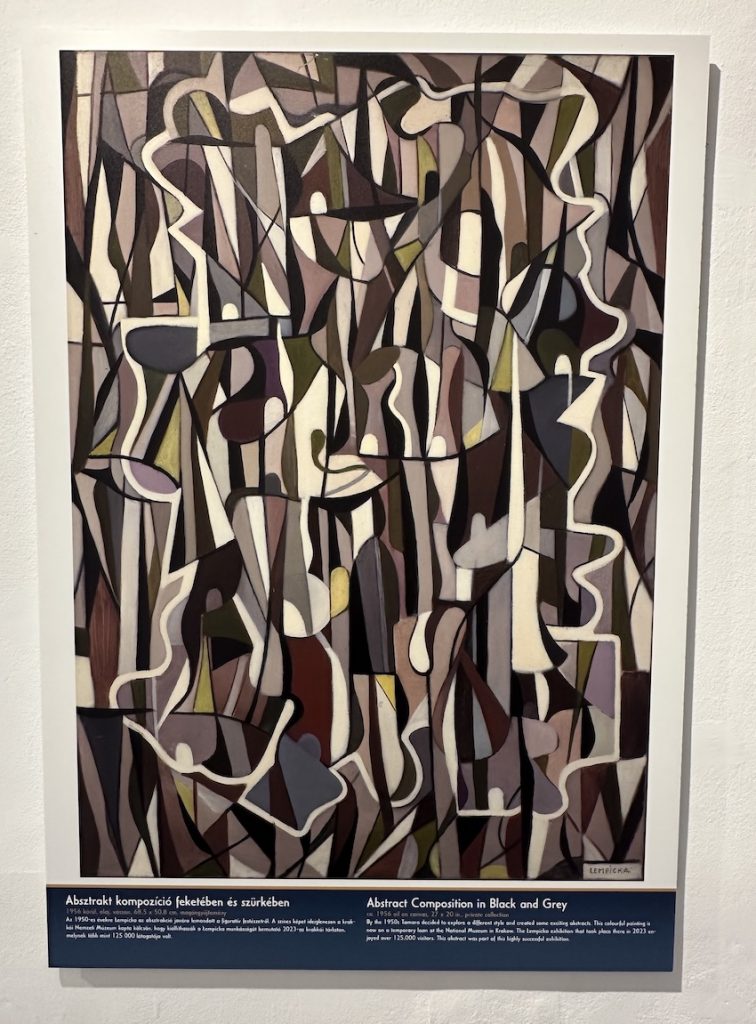
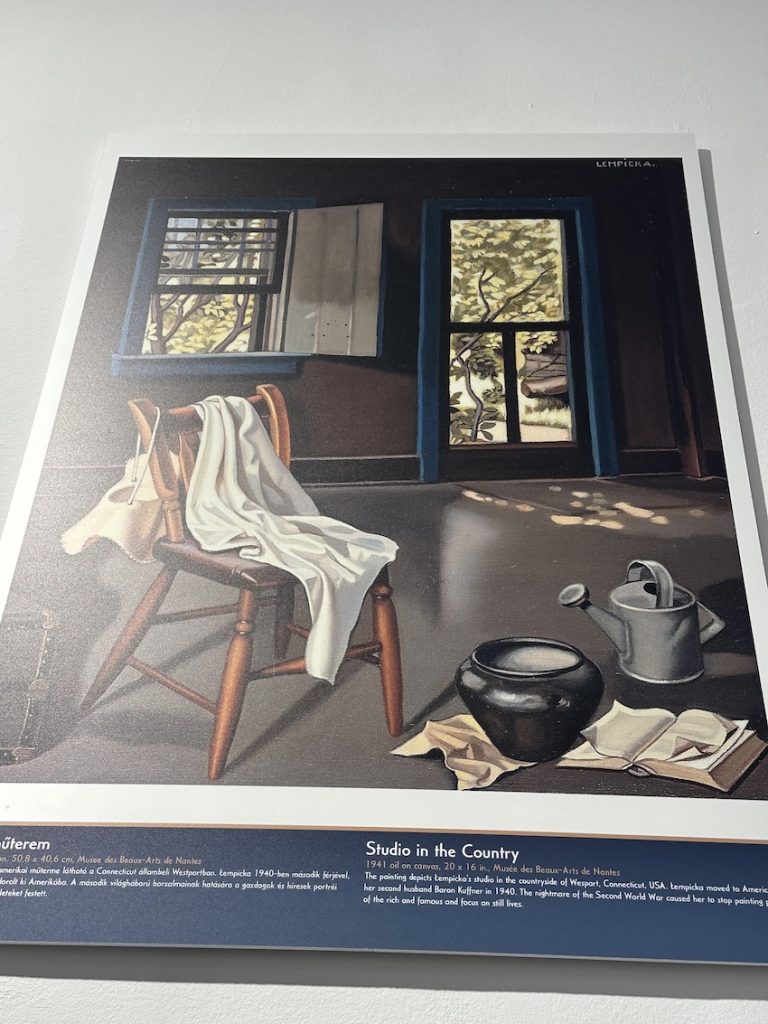
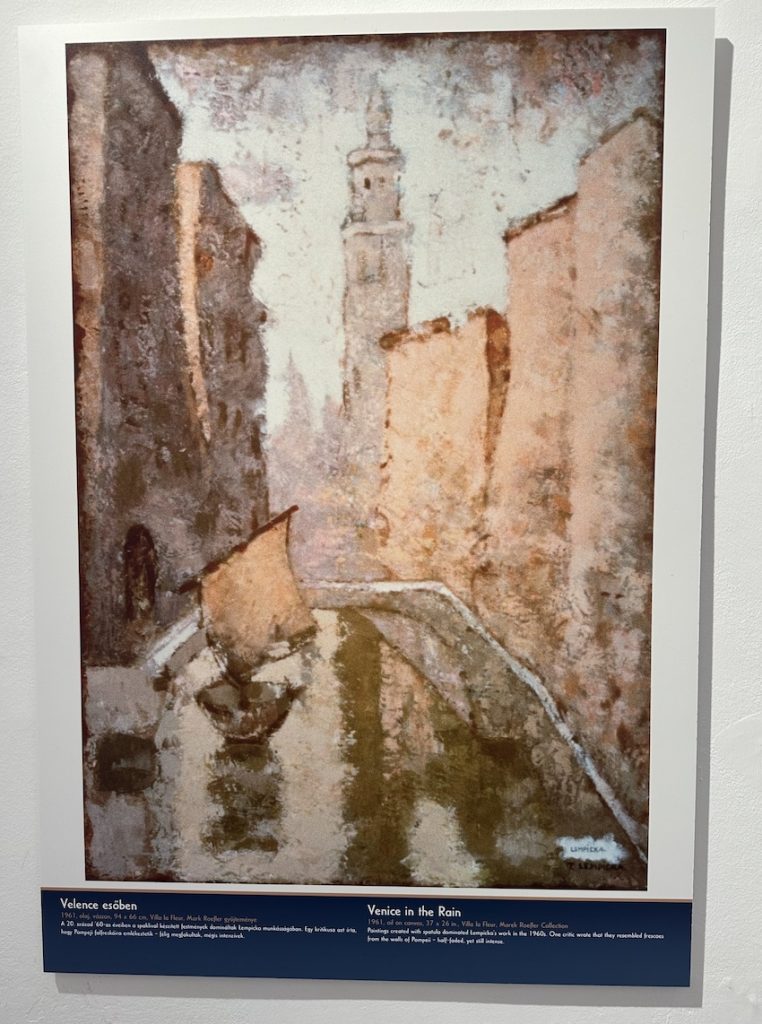
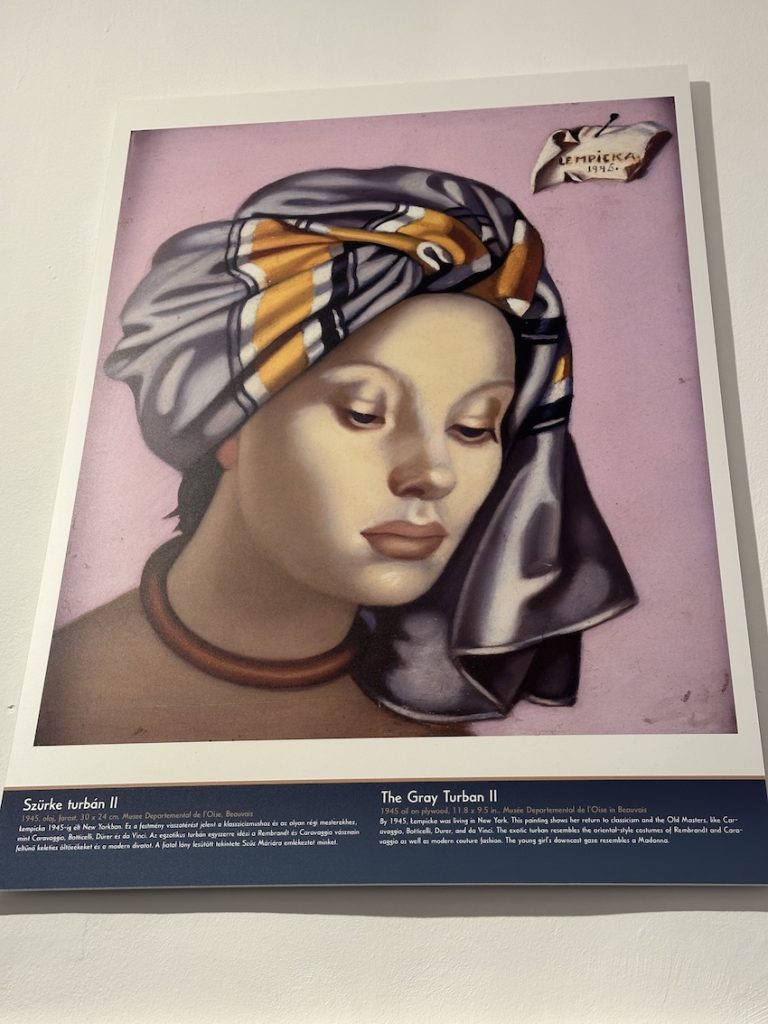
The exhibition highlights some of Łempicka’s most iconic works from the mid-1920s to the early 1930s, including Self-Portrait in a Green Bugatti, Kizette in Pink, and Young Lady with Gloves (Centre Pompidou Paris), the latter being her most reproduced piece.
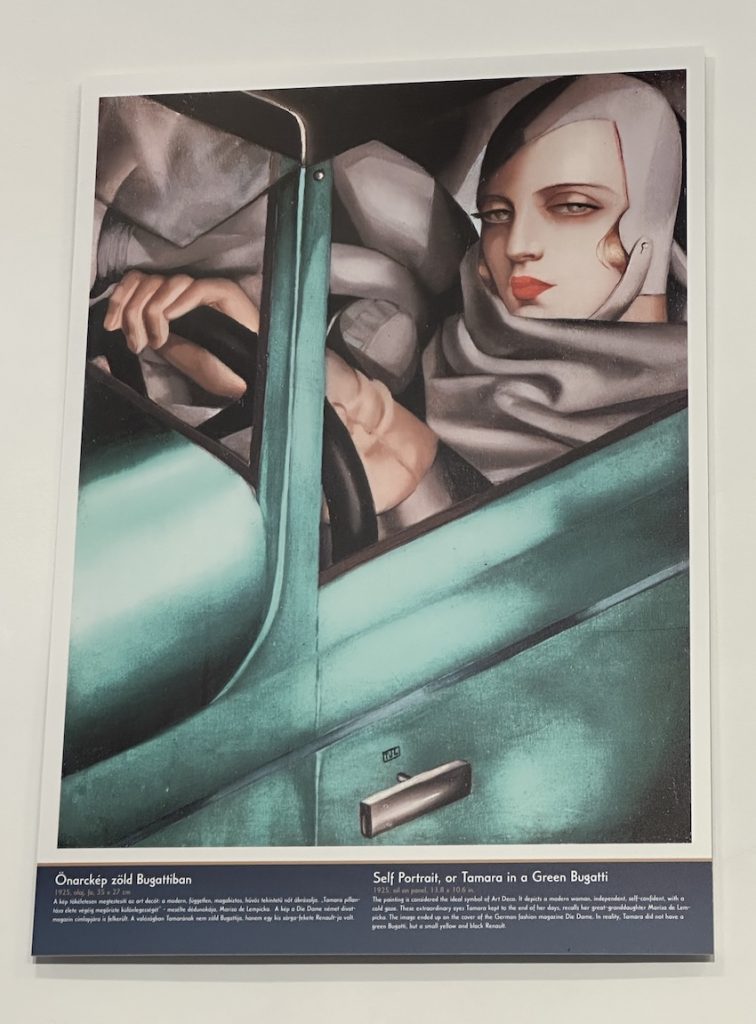
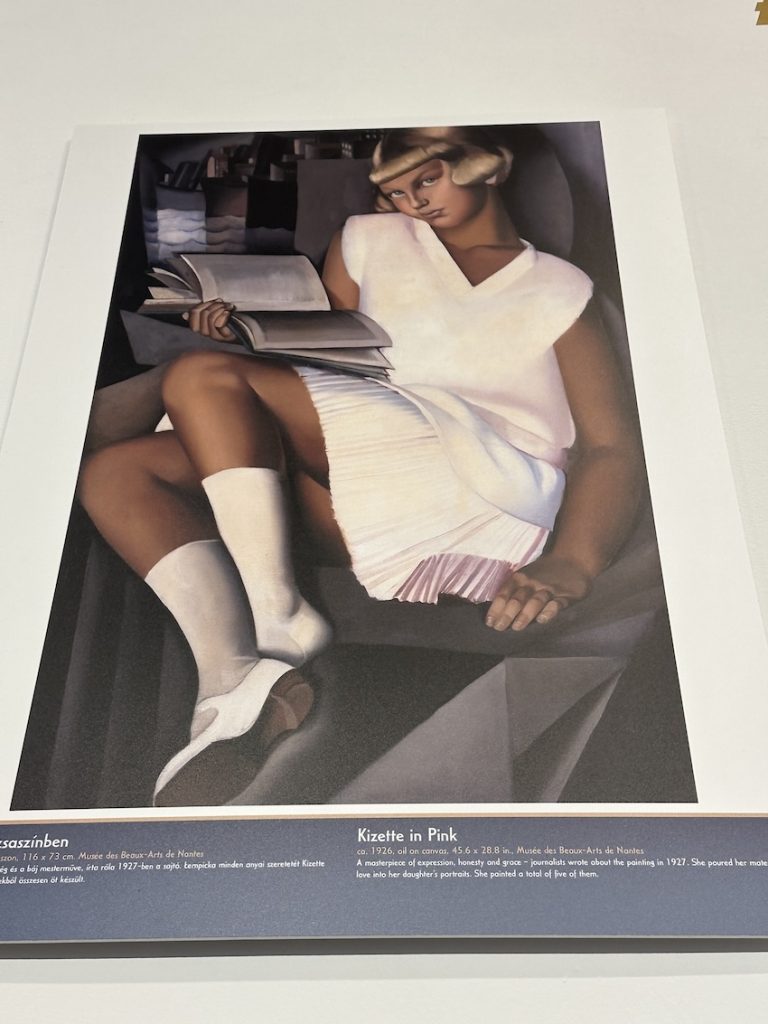
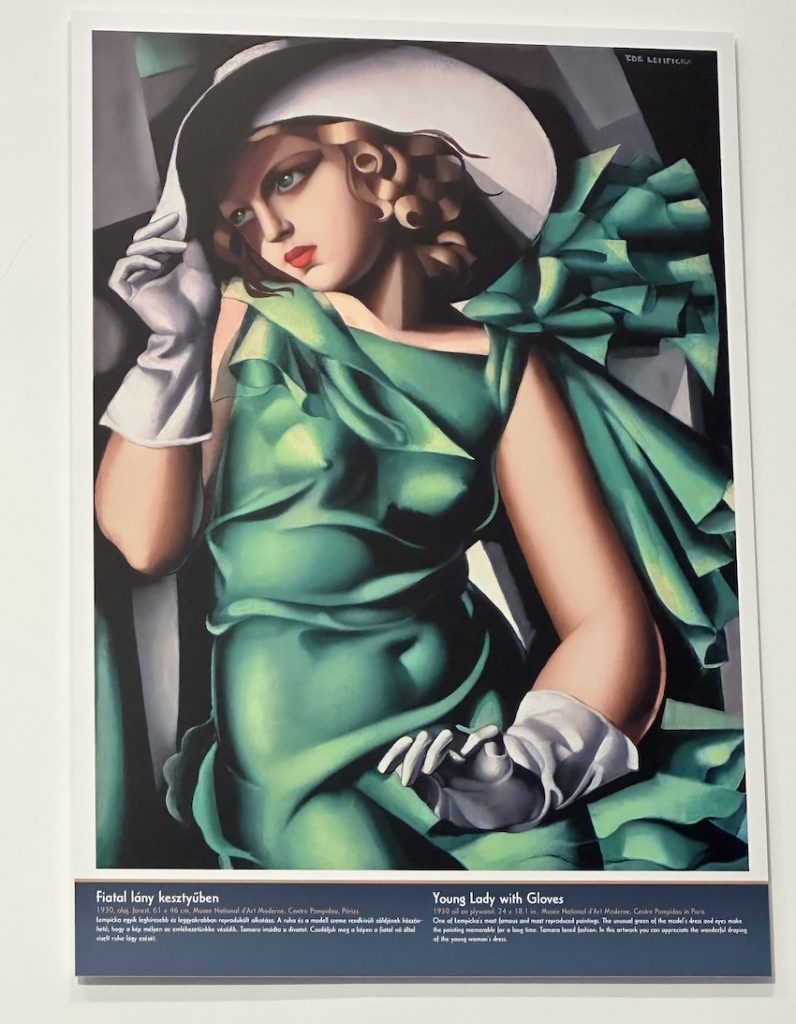
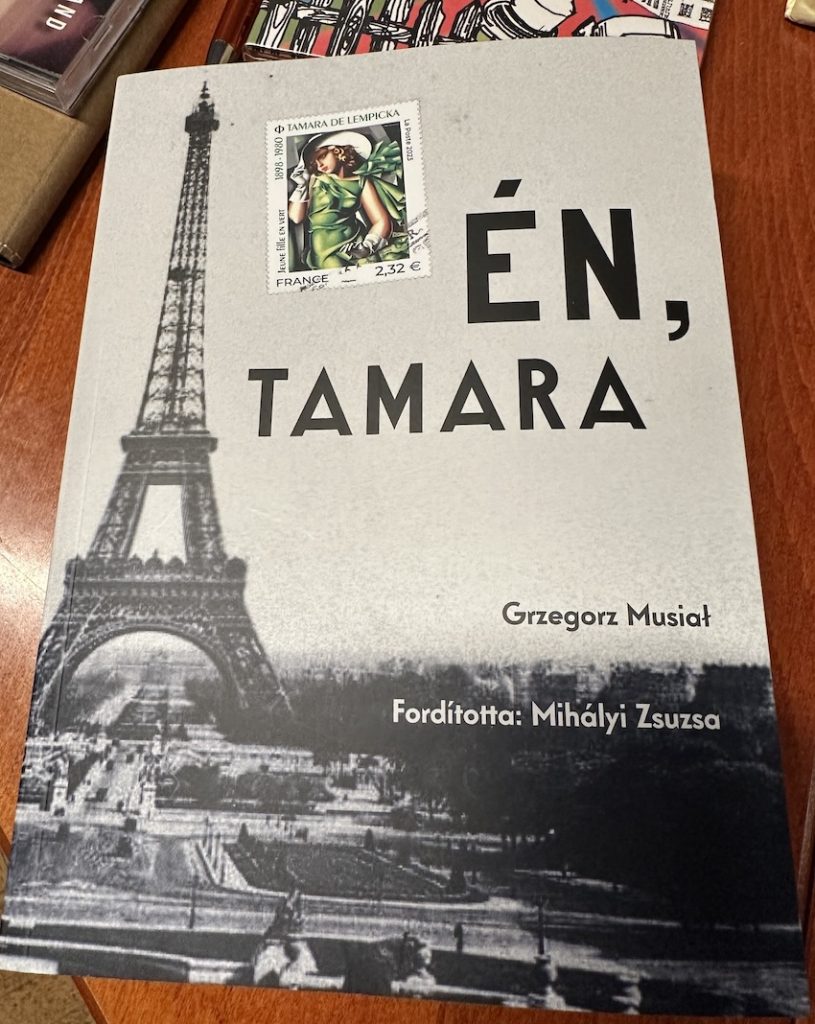
The event also featured Zsuzsa Mihályi, the translator of the recently published Hungarian edition of I, Tamara by Grzegorz Musiał, and Endre Balogh from Prae Publishing.
The novel offers a vivid and detailed portrayal of the dazzling, decadent art world of Paris in the 1920s and 1930s, populated by legends such as Picasso, André Gide, Jean Cocteau, Gertrude Stein, Ernest Hemingway, Coco Chanel, and Marlene Dietrich. Through this, the book provides a multifaceted depiction of Łempicka as an artist, a woman, a mother, and a lover, while unveiling the stories behind her masterpieces.
In Hungary, Łempicka’s name and her adventurous yet often tragic life are relatively unknown, and there has been no comprehensive exhibition of her oeuvre to date. The Polish Institute aims to change this in 2025 by introducing Hungarian audiences to the first female art star and her extraordinary career.
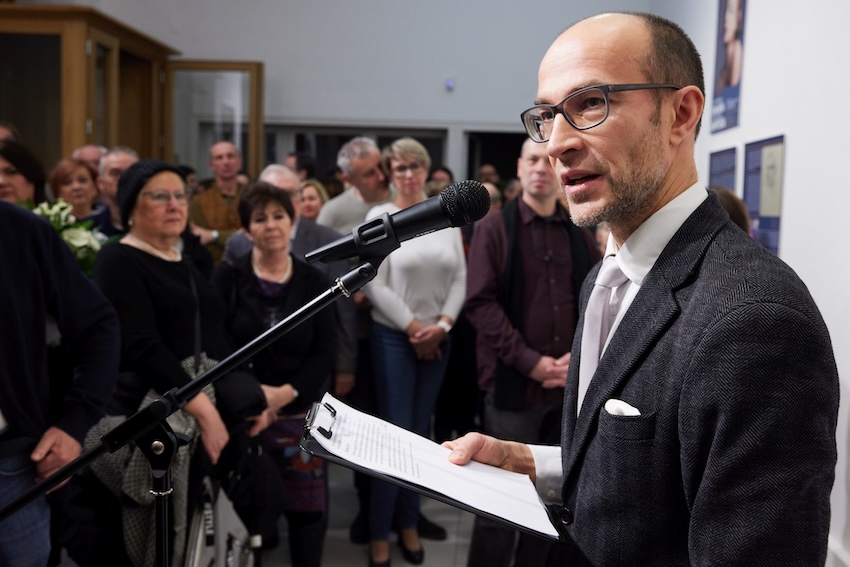
The exhibition was inaugurated with the welcome remarks by Jarosław Bajaczyk, Director of the Polish Institute in Budapest:
“Tamara Łempicka’s belief was: “Life is like a journey. Pack only the bare necessities; because you have to leave room for what you collect along the way.”, and indeed, her life was an extraordinary journey filled with dramatic twists and turns, great successes and personal struggles. This evening we can undoubtedly learn fascinating details about her remarkable path from art critic Andrea Bordács.
Tamara Łempicka was one of the first internationally acclaimed female artists – a bold, independent and self-assured creator with exceptional business acumen, carefully and consciously building her artistic career. She once said: “There are no miracles. There is only what you make.”
Łempicka is one of the most famous Polish women in history, perhaps second only to the two-time Nobel laureate scientist Marie Skłodowska-Curie. Her iconic figure, life and art continue to inspire. In the United States, Tamara Łempicka is experiencing a renaissance. This renewed interest has been fuelled by a Broadway musical Lempicka, directed by Tony Award-winning Rachel Chavkin, and a major exhibition at the de Young Museum in San Francisco.
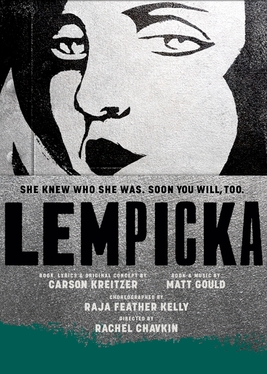
In addition, the new documentary “TAMARA – The True Story of Tamara de Lempicka & The Art of Survival” by East Meets West Productions, LLC had its world premiere in October 2024. As film director Julie Rubio explains, “Tamara’s story teaches us how to survive and navigate through really horrific things. Here’s this woman who lost her country twice through war. She just kept figuring out how to find the beauty in life.”

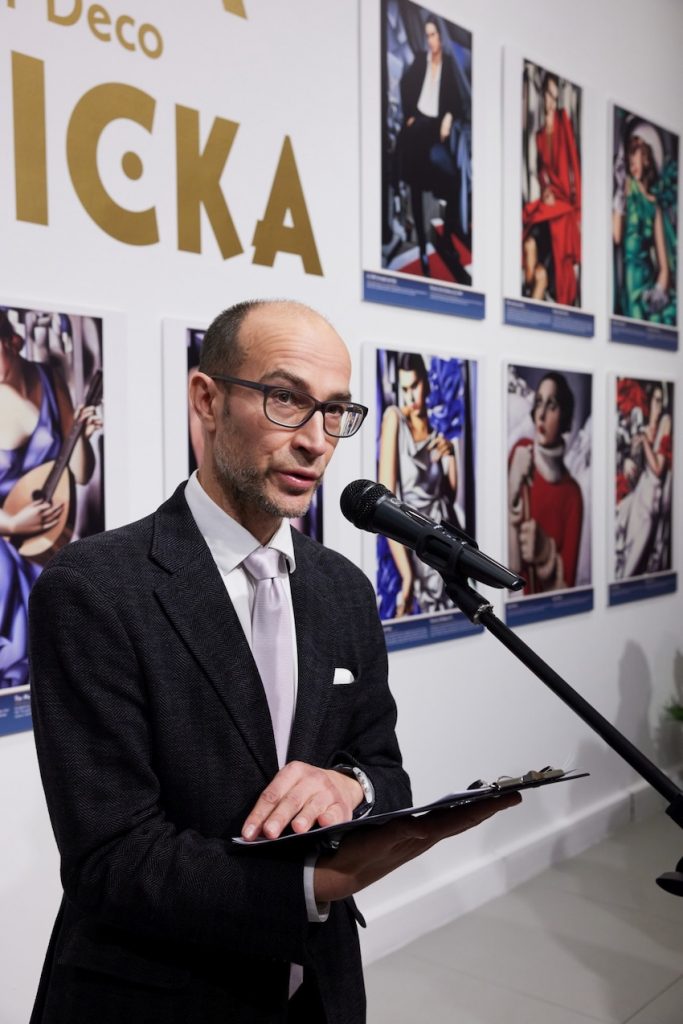
Hungarian Connections in Tamara Łempicka’s Life:
One of Łempicka’s most iconic works – her Self-Portrait in a Green Bugatti – was inspired by a photograph taken by the Hungarian photographer André Kertész.
Her second and last husband was the Hungarian Baron Raoul Kuffner de Diószegh. A devoted collector of her works, Kuffner commissioned Łempicka to paint a portrait of one of his fiery-tempered dancers. The couple married in Switzerland in 1934 and, at Tamara’s insistence, moved permanently to the United States in 1938 – where they narrowly escaped the horrors of the Holocaust.
The exhibition we are inaugurating today was organised by the Polish Ministry of Foreign Affairs in collaboration with the Tamara de Łempicka Estate. This event marks the beginning of a series dedicated to celebrating Łempicka’s life and art. In the spring, in partnership with Prae Publishing and the Polish Clarté Foundation, we will present a book launch of “I, Tamara”, the captivating 500-page biography by Grzegorz Musiał, recently translated into Hungarian by Zsuzsa Mihályi. The author has been invited to join us for the event, giving us ample time to immerse ourselves in this fascinating book, available for purchase today at a special price.
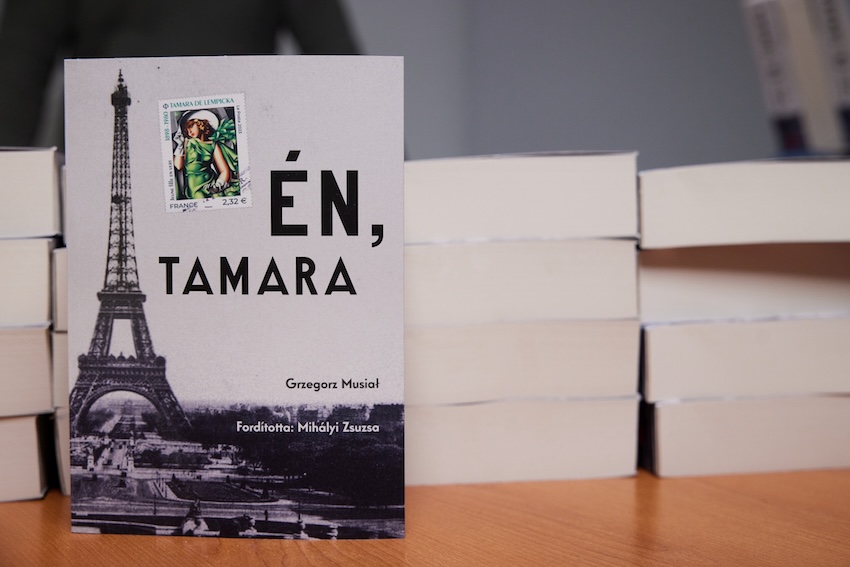
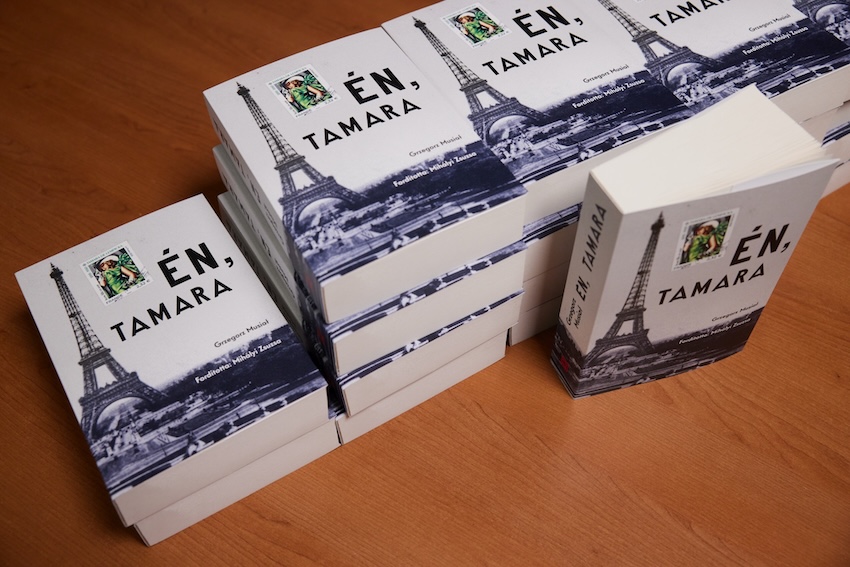
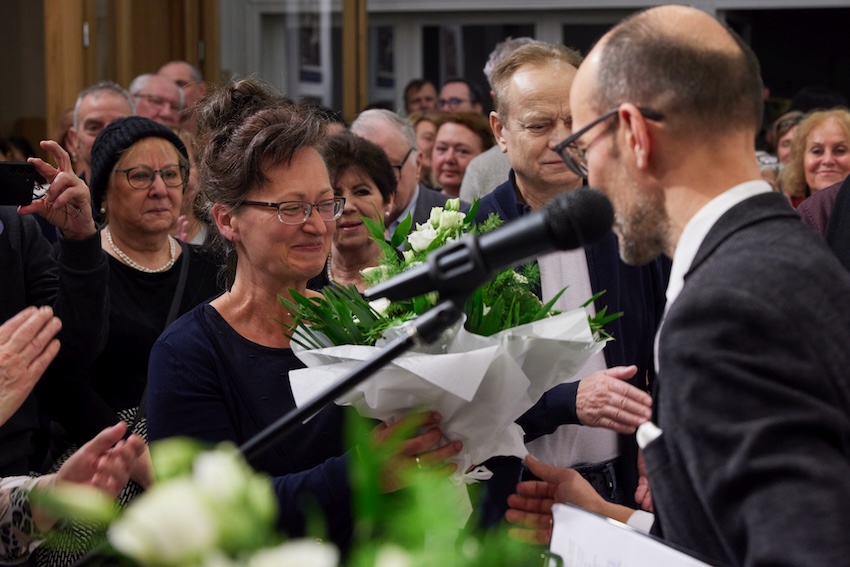
Beyond the book launch, we also plan to screen the documentary “The True Story of Tamara de Lempicka and the Art of Survival”. If we are fortunate, we may even be able to welcome Marisa de Lempicka, the artist’s great-granddaughter.
Tamara Łempicka was a true cosmopolitan, yet always proudly emphasized her Polish origins and heritage. Between 1928 and 1929, she visited Poland twice and generously supported Polish war victims through a foundation established by the great pianist and statesman Ignacy Jan Paderewski. She even sewed uniforms for women in need – helping others in a manner that was, of course, always stylish.
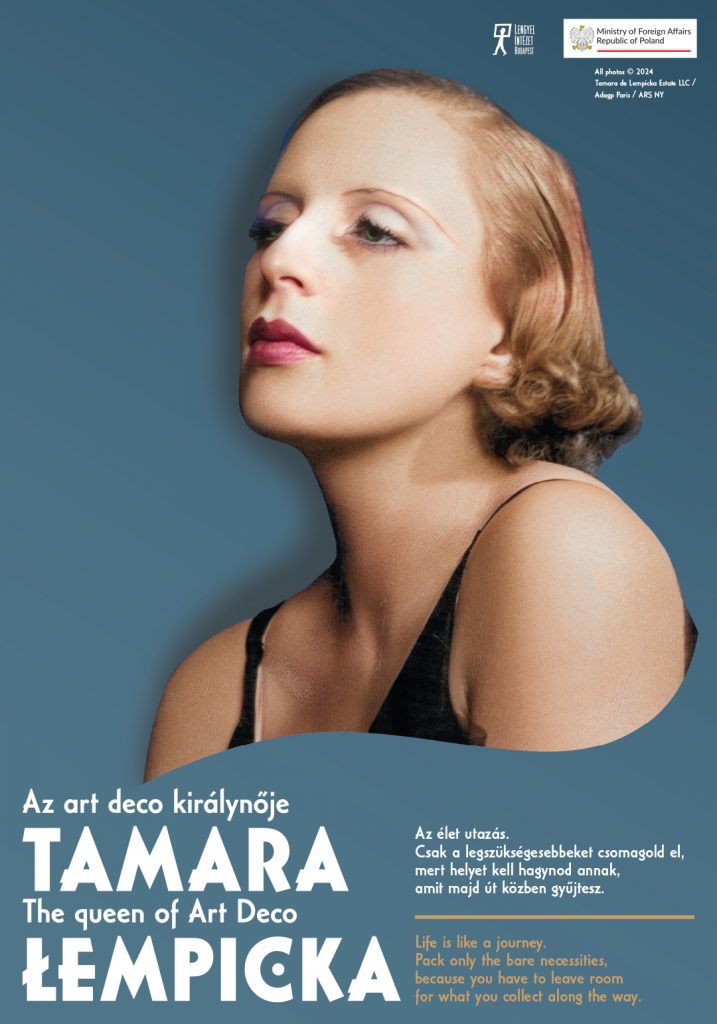

In Poland, every January, a grand charity auction is held to support paediatric care, organised by the Great Orchestra of Christmas Charity.
Polish communities abroad also take part in this noble initiative.
And now, let us enjoy lively conversations and our glamour-style buffet featuring champagne and flódni, a delicious Hungarian-Jewish dessert.”
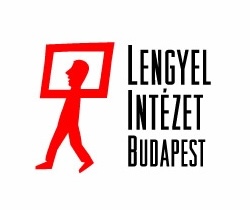
After the opening ceremony, guests eagerly and curiously immersed themselves in viewing the remarkable paintings displayed in the halls of the Polish Institute, located along the cultural stretch of the Andrássy Avenue.
In 2024, the Polish Institute in Budapest celebrated its 85th anniversary. Since its founding in 1939, the Polish Institute in Budapest has never stopped operating and consistently offers outstanding programs that showcase the richness of Polish culture, which have become highly popular among Hungarians.
Exhibition on view: until 21 February 2025
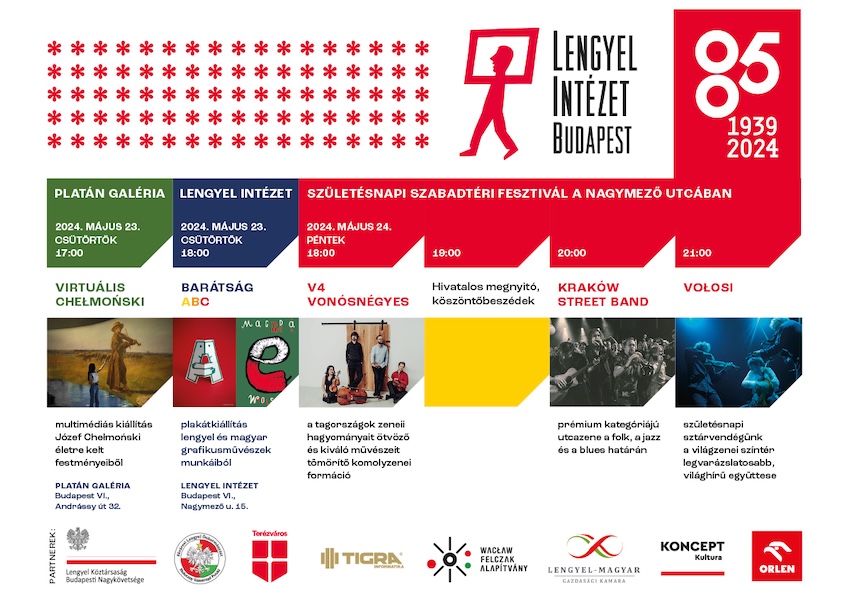
Source: Polish Institute, Budapest
Photos by the Polish Institute, Budapest and Diplomatic Press Agency (DPA)





